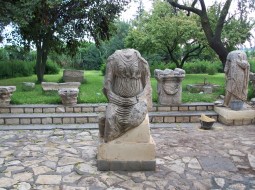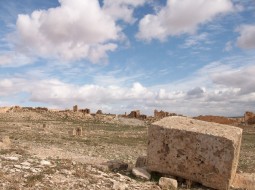The Medina of Tunis

THE MEDINA OF TUNIS.
With its narrow sinuous streets, labyrinthine pattern and irregular order, the Medina of Tunis stands in stark contrast to mannered urbanism of the French colonial city, the Nouvelle Ville (New City). The Medina spreads out both left and right from the terminus of the main boulevard and its central band of ficus trees; renamed Avenue Bourguiba after the independence of Tunisia in 1956.
At the western end of the wide boulevard of Avenue Bouguiba is located the famous always crowded Bab El Bhar, one of the principal entry gates to the walled medina. The medina was a walled city with gates, which used to be lockedto defend the medieval Arab-Moslem city.
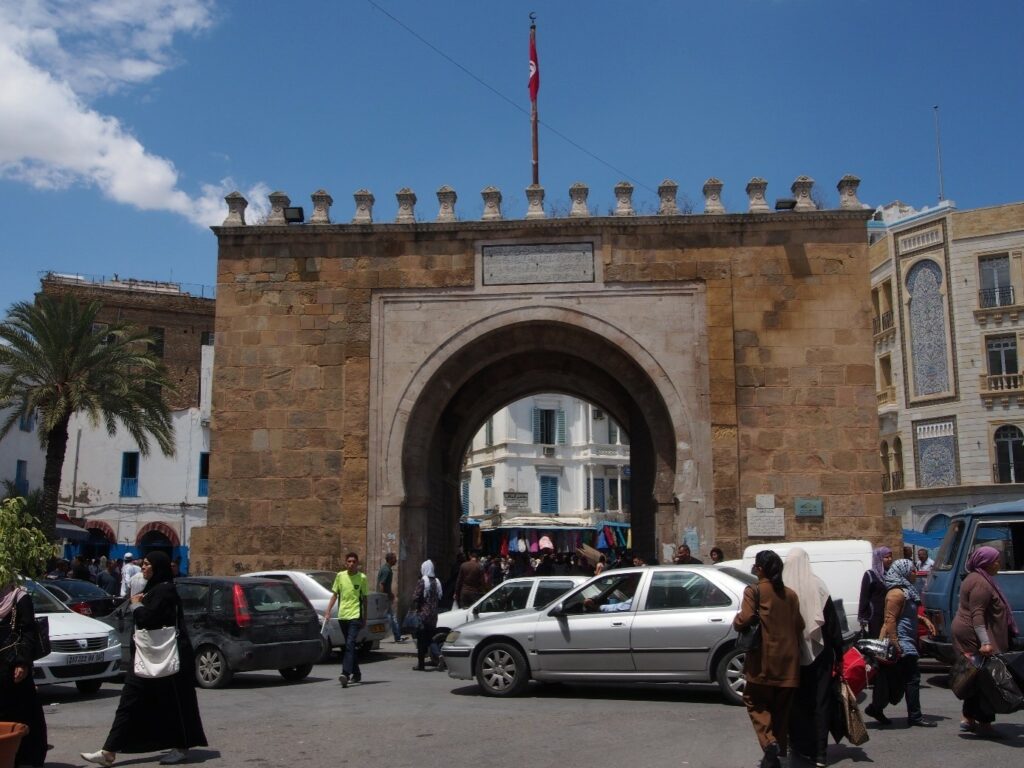
The crowded Bab El Bhar
The architecture of the Nouvelle Ville, with its Art Deco and Art Nouveau buildings adjoining Avenue Bourguiba, provide an appetizer to what is another cultural world lying behind the medina walls, the Moslem world. Theflamboyance of these buildings is well admiredin the 1902 Municipal Theatre, one of the best Art Nouveau theatres in the world.
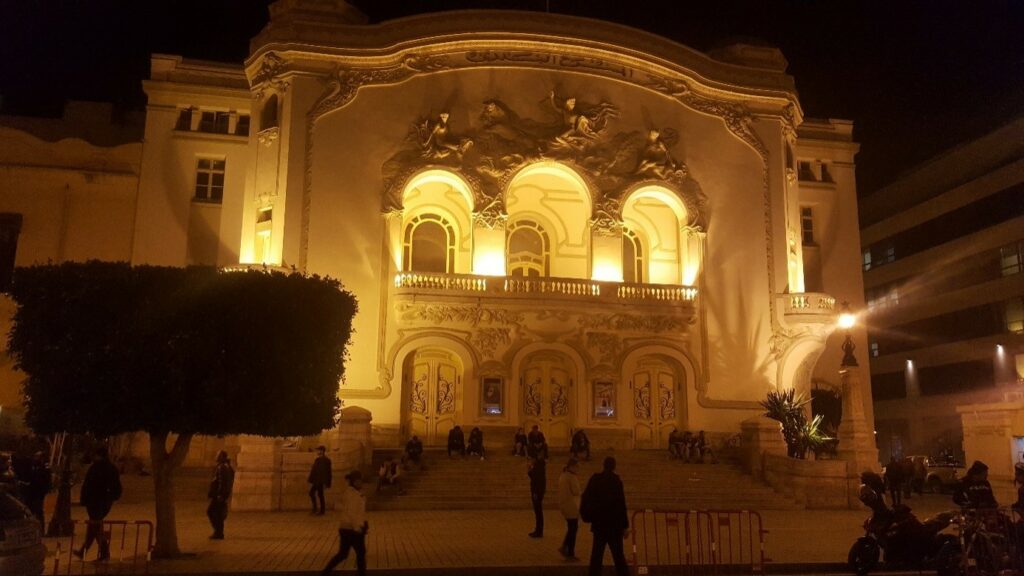
Municipal Theatre of Tunis dated back to 1902
A foretaste of this sudden change is seen in the statue of IbnKhaldun, the 14th century scholar and philosopherborn in Tunis and credited with being the founder of historiography and sociology. His Prolegomena or Introduction to History is still today a starting point for theories of history and sociology. The statue of IbnKhaldun just in front of Bab El Bhar faces east towards the Nouvelle Ville and indubitably proclaims we are in a Moslem oriental world characterized by high culture and scholarship. And just metres to the north of the statue of IbnKhaldun lies the Cathedral of St Vincent de Paul, the main Roman Catholic Cathedral in Tunis, opened in 1897 and displaying a mix of Moorish revival, Gothic revival and Neo-Byzantine architectural styles. The juxtaposition of the Cathedral and the statue of IbnKhaldun symbolizes the co-existence of the two great monotheistic religions in the world.

IbnKahldun Statue facing St Vincent de Paul Church
With the establishment of the French Protectorate in Tunisia in 1881, the peripheral areas of the medina declined with the birth of the new French city. However, the core of the medina stayed intact. A buffer area exists here between the Orient and the western world, where popular markets (souks) and black-market businesses flourish, a consequence of the rural exodus to the cities in Tunisia in the 1960s. These first parts of the medina alternate with fruit, vegetable and fish markets, and co-exist with shops selling cheap Chinese imports. These demonstrate to the visitor how the medina is adapting and changing in response to the economics of a global economy and the needs of poorer Tunisians.
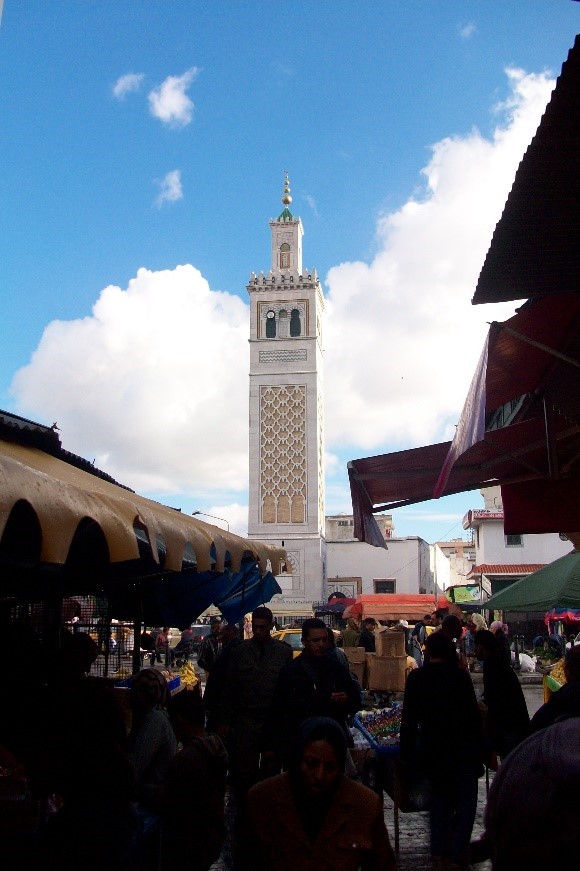
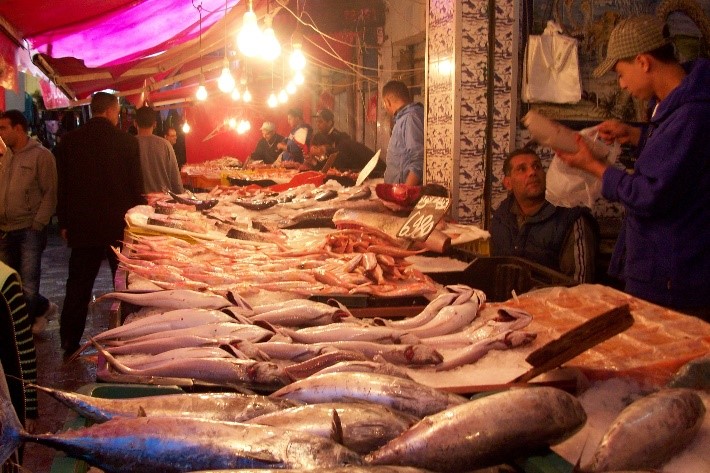
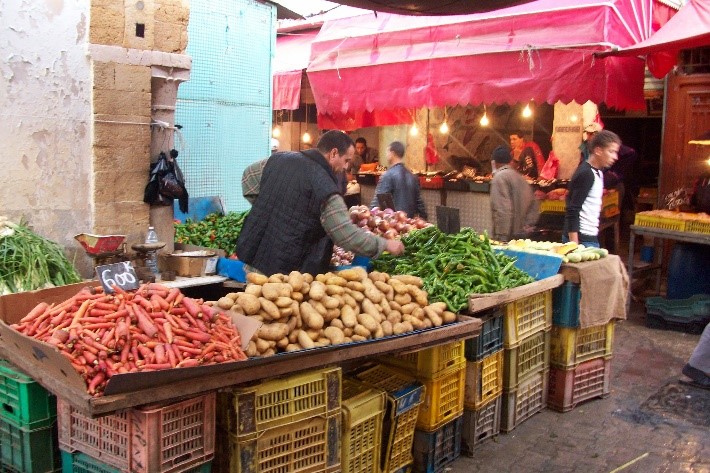
A buffer economically active area between the Orient and the western world
Next a visitor crosses Zitouna street, a narrow and crowded hubbub of souvenir and handicraft shops, whose operators loudly seek to persuade visitors particularly tourists to enter their shop and purchase their handicrafts.

Handicrafts’ shops in medina
A short walk leads to the historic heart of the medina, where the narrow alleyways open out to a square, announcing the imposing façade of the oldest mosque in Tunis, the Zitouna Mosque, or Mosque of the Olive Tree. The mosque was likely constructed on the orders of Hasan Ibn al-Nu’man, who led the Moslem conquest of Tunis and Carthage from the Byzantine Empire in 698 AD. Tunis replaced the Roman city of Carthage. For the Moslem conquerors, Tunis had the advantage of being protected from the coast by the Lake of Tunis, as the Byzantine navy controlled the seas. In the 13th century with the advent of the Hafsid Dynasty, Tunis became the capital city of North Africa.
The urban pattern in the medina shows a series of concentric circles around the Zitouna Mosque at it centre. The nearest ring around the mosque comprise souks that exhibit “noble” activities, such as the sale of spices, silks, perfumes and carpets, commodities at the heart of foreign images of the Orient. The less desirable activities likely to cause noise and pollution, such as leather works, saddleries, carpentry and ironworks, are relegated to the outer rings, far from the mosque.
The Zitouna Mosque is noted for its spectacular square minaret, built in 1894 with limestone ornament on a background of yellow ochre sandstone. It reaches 43 metres in height, and indicates that most believers are adherents of the Malakite school of Sunni Islam; a school of Islamic jurisprudence based primarily on the Koran and the hadiths or sayings of the Prophet Muhammad. The mosque also hosted one of the first and greatest universities of Islam, a centre of Islamic research and scholarship over many centuries.
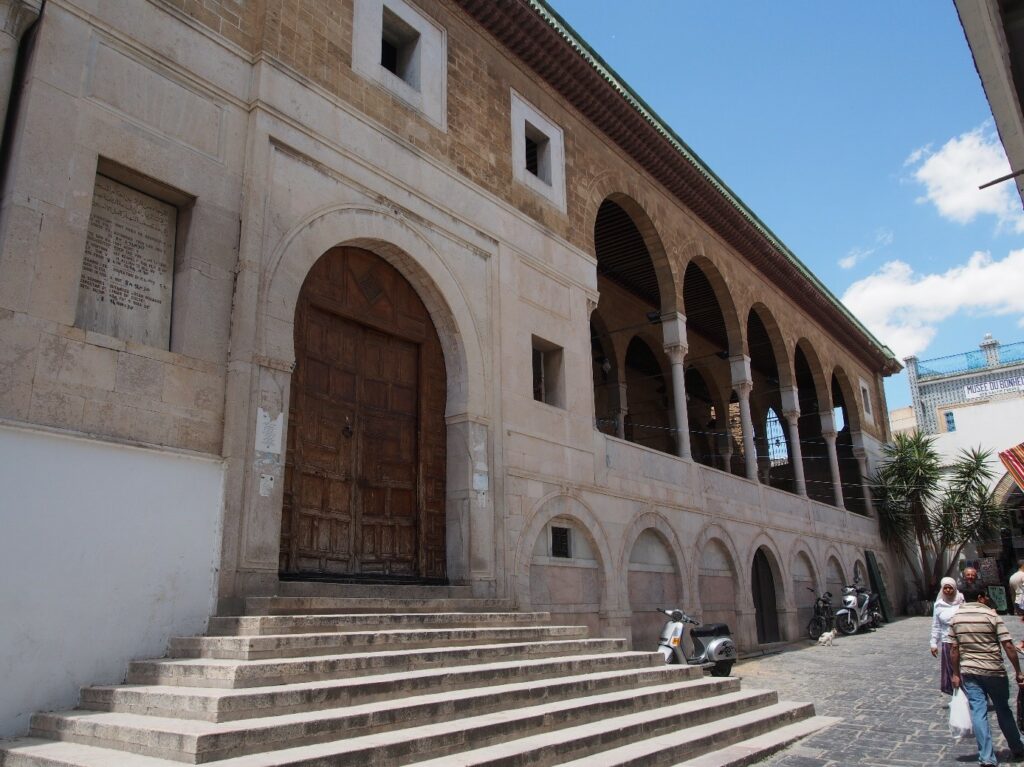
Historic heart of the medina / Zitouna mosques’ Façade
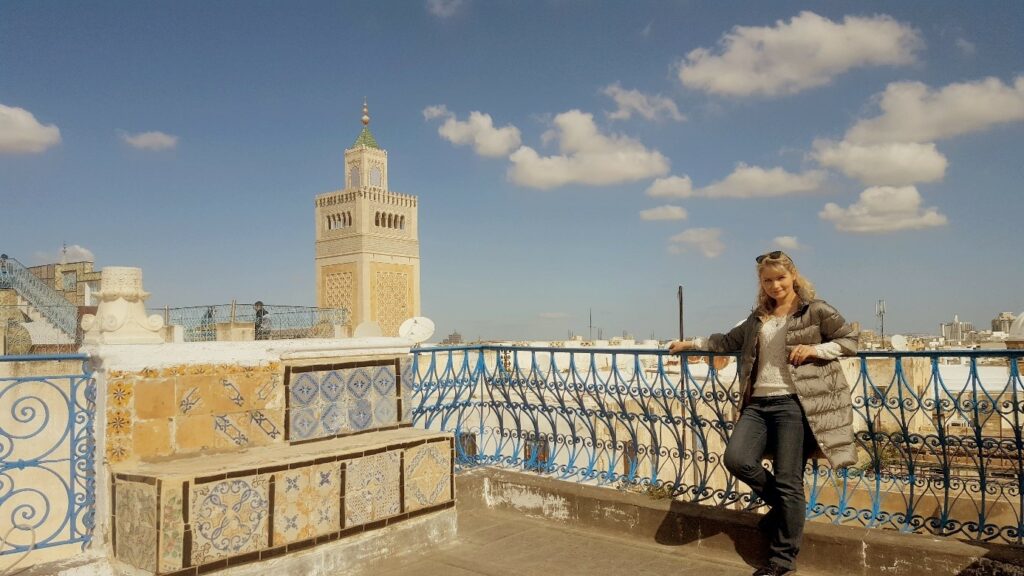
The elegant Zitouna Mosques’ Minaret
Surrounding the mosque are many satellite madrasas or Koranic schools, such astheelegant Ottoman era Madrasa Slimania, built in 1754 by Abu al-Hasan Ali I in memory of his son Suleiman. It is the first of four madrasas to be built by Abu al-Hasan Ali I : Madrasa El Bachia, Madrasa El Achouria and Madrasa BirLahjar.
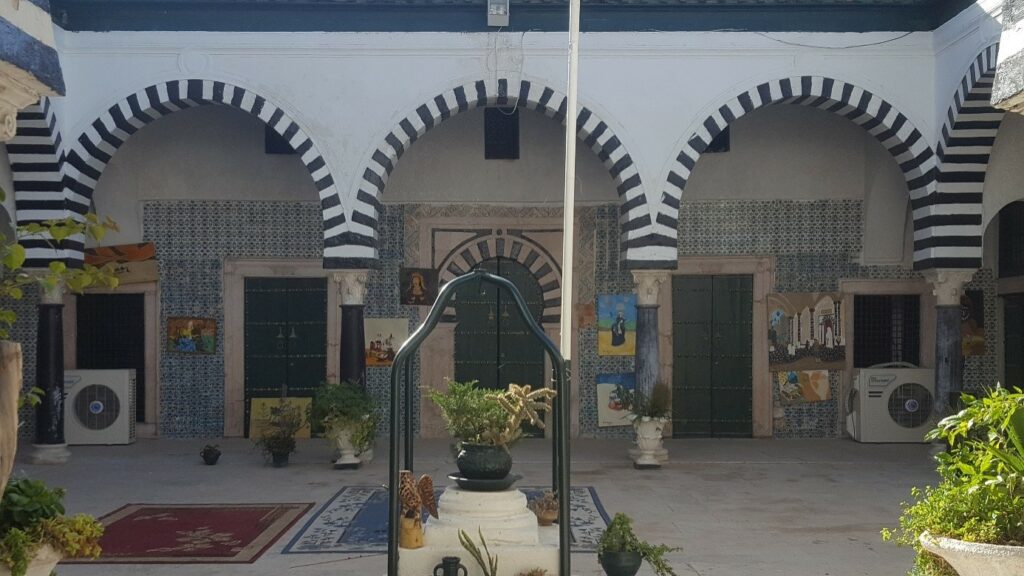
The cultural guide walks you then through the perfume souks towards the Souk El Berka, passing the Mrabet Café with its elegant red, green and white spiral painted columns, in the Souk El Trouk (Souk of the Turks), specializing in clothing and embroidery, one of the earliest cafes in the Medina.

Mrabet Café
The Souk el Berka specializes in gold and jewellery. Originally built by Yusuf Dey in 1612 as a slave market to sell slaves from Sub-Saharan Africa, it was converted into a gold andjewellery souk after the abolition of slavery in Tunisia in 1846.Originally the Souk El Bey specialized in carpets and silk, but today the traders mostly deal in jewellery.
The nearby Souk el Chaouachine dates from the Ottoman era, when Tunisia was part of the Turkish Ottoman Empire ruled from Constantinople (modern Istanbul). Here today skilled craftsmen work with flair and passion to make the famous Chechia or Tunisian Fezz, a hat made from woolen yarn and usually worn by men outside of their homes as a sign of respect and tradition. The Chechia artisans were mainly of Andalusianorigins and formed one of the most important artisan guilds in Tunisia. The Souk el Chaouachine is the only entirely covered souk in the whole medina.Today, these artisans, apart from their traditional specialty, converted to a new kind of hats designated this time to women’s’ market.
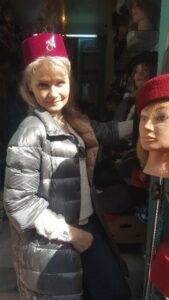
A readapted Fez in Chaouachine Souk designated for women
The three centuries of Ottoman rule left an indelible mark on the medina, most notably with the octagonal Turkish minarets on mosques such as the HammoudaPacha mosque dating from 1655 and the Youssef Dey mosque dating from 1631 or the more outlying SahebEttabaa Mosque dating from 1814.

HammoudaPacha Mosque / Octogonal minaret
The medina possesses a range of restaurants serving traditional Tunisian cuisine for the hungry locals and visitors alike, depending upon the tastes and budgets of the clients. These vary from the Fondouk el Attarine, the Mrabet restaurant or the one just near the Zitouna Mosque. The guide will orientate you for choice.
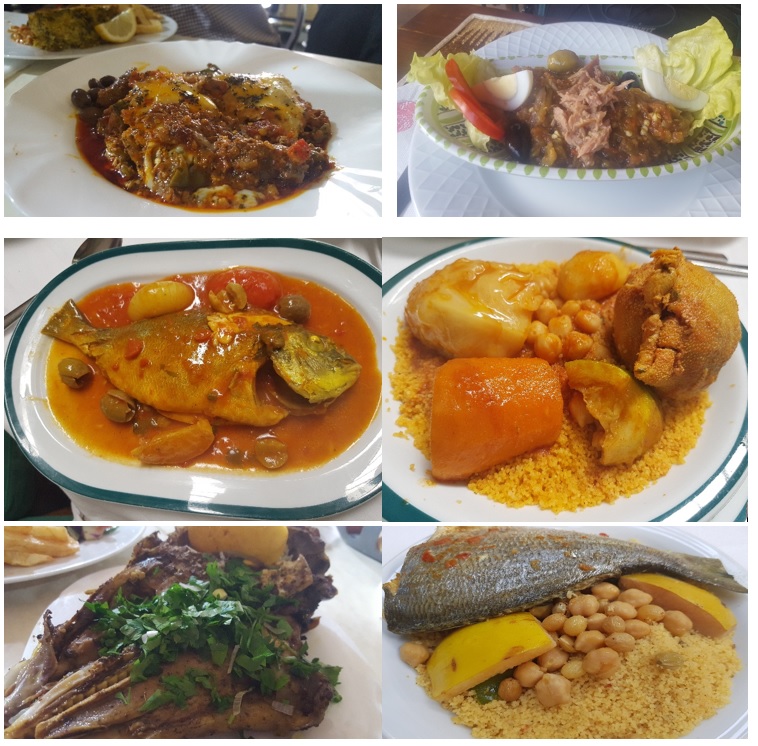
Gastronomic and traditional Tunisian meals are proposed and explained by our guide
After a nourishing tasty lunch, visitors can continue the guided visit of the medina with a change of pace from the economic, religious and spiritual aspects, to the domestic architecture of the residents.
Their exquisite metal studded painted timber doors characterize the residential quarters. They illustrate with a dazzling repertoire of symbols reflecting many artistic traditions, cultures and ancient belief.
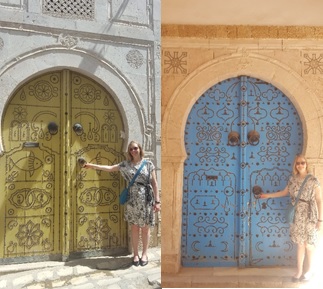
Studded wooden doors of medina
Opportunities exist to enter the forbidden spaces behind the decorated doors of the rich bourgeois houses of the Ottoman period. Inside lies tranquil colonnaded courtyards, replete with intricate woodcarving and varnished timberwork, ceramics and tiles of breathtaking beauty, richly detailed stucco and plaster workmanship, and painted ceilings of detailed design and vibrant colours.
Some of the best examples are Dar Lasram, now the headquarters of the Association for the Protection of the Medina, Dar Othman; headquarters of the National Heritage Institute, Dar Al Jaziri, the House of Poetry, and Dar Bach Hamba.

Dar Lasram
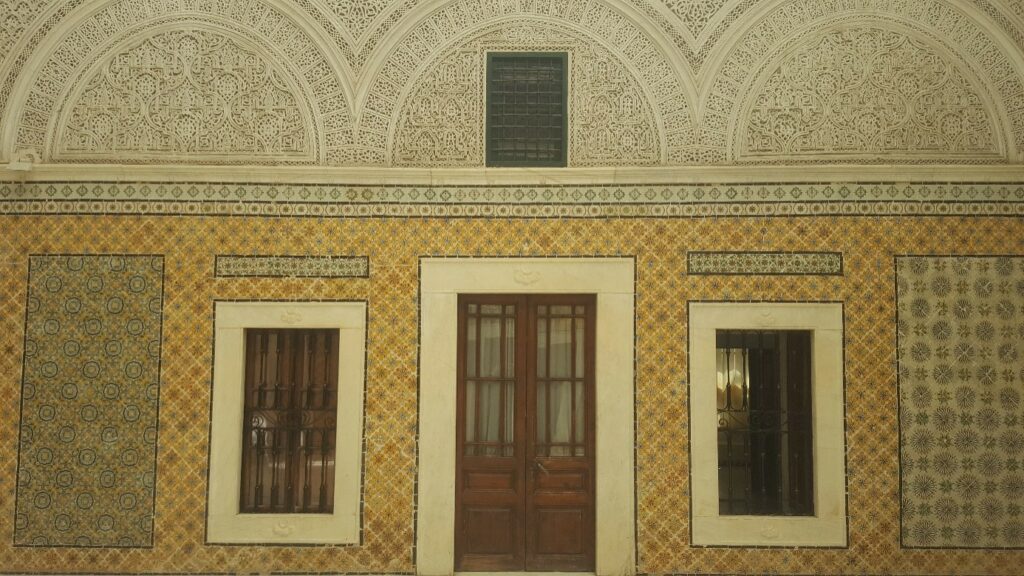
Dar Lasram / Detail

Dar Othman
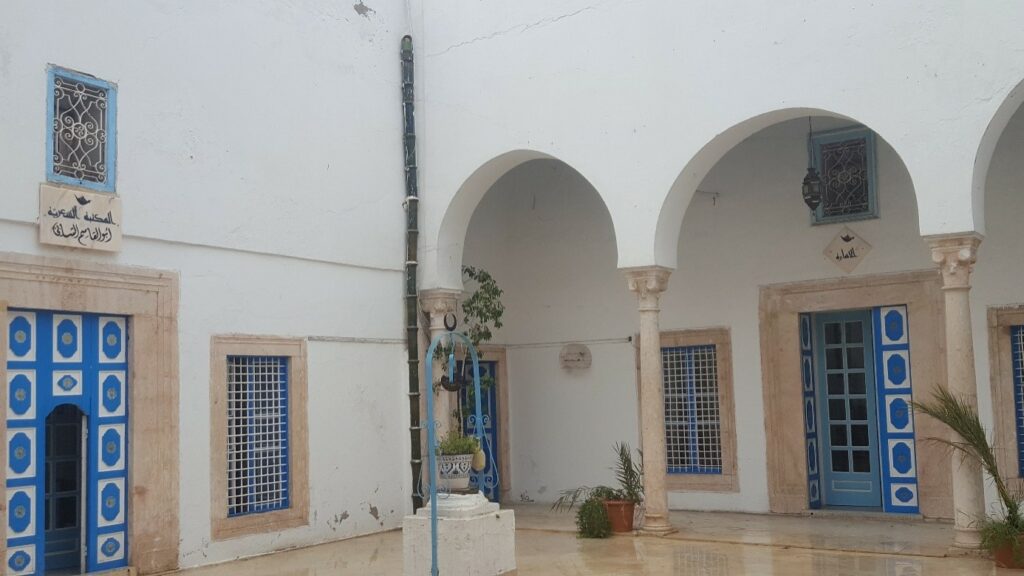
Dar Al Jaziri, the House of Poetry
The skilled craftwork in the medina is on display in the Souk El Leffa, also called the Souk of the Djerbians, as it was mainly occupied by merchants from the island of Djerba in the south of Tunisia. This souk is noted for its brick barrel vaulted architecture. A good example is Dar Mnouchi with its wonderful ceramic panels made by Jewish artisans working for a Moslem family.
Explain that this house is uynique by its anthropomorphic panels showing men eating dates, animals like girafes, or a women crying after her husband who passed away, going to his tomb the day after funerals, as it is forbidden for wifes to reach funerals only men. The handicraftsmen wanted to show this tragic and sufferance of a separation. Here a special tribute to the owner today mradelmnouchi is doing big efforts to rstaure his house and make of it a real private museum in the dress of a traditional café shop

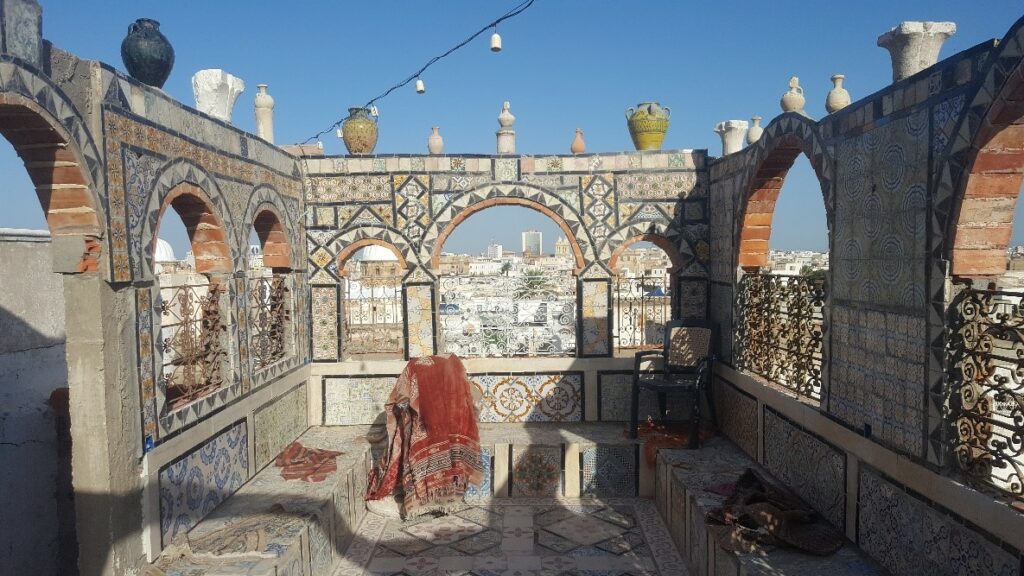
Ceramics panels and terrace of Dar Mnouchi House
The medina is also the final resting place for most of the Husainid dynasty rulers of Tunisia at Tourbet el Bey, constructed in the reign of Ali Ibn Hussein (1759 – 1782), and built of yellow sandstone capped with majestic domes, the main ones of which are covered with green tortoiseshell shaped tiles.
Located in the medina are numerous marabouts or mausoleums of holy sages and patrons, who are venerated by the community for their scholarship and good works. Principal amongst these areSidiMahrez (951 – 1022), the scholar and teacher, considered the patron saint of Tunis, and protector of the poor and downtrodden, the minorities and disadvantages, and SidiBrahimRiahi (1766 – 1850), Sufi religious scholar and ambassador, whose marabout, the work of Moroccan artisans, has a stunningly decorated cupola interior.
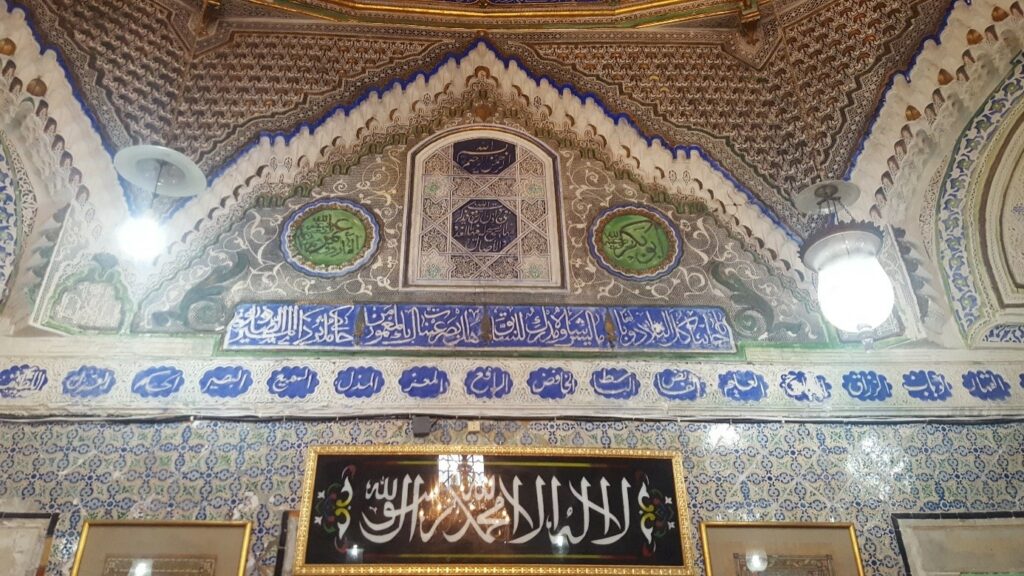
SidiBrahimRiahi Mausoleum
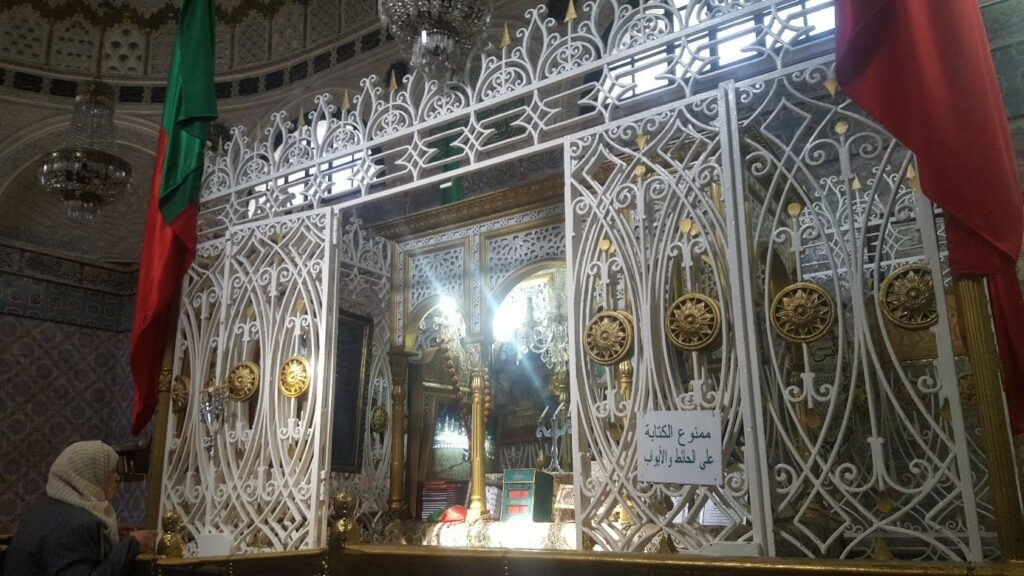
SidiMahrez tomb
No visit to the medina would be complete without a visit to the Kasbah Square, located outside its western walls. Kasbah Square was the fortified Turkish citadel with its military fort, Beylical palaces, audience halls (diwans) for ministers, comprising the political centre during Ottoman rule. After independence, its function remained and today the Kasbah is the government headquarters with the Finance, Defense, Culture, Judicial Affairs and Social Affairs ministries as well as the Tunis City Hall building, the national archives and the national library.
During the Arab Spring in 2011, Kasbah Square was the venue for major protest demonstrations leading to the Jasmine Revolution, ushering in to Tunisia what is now the only functioning democracy in the Arab world.
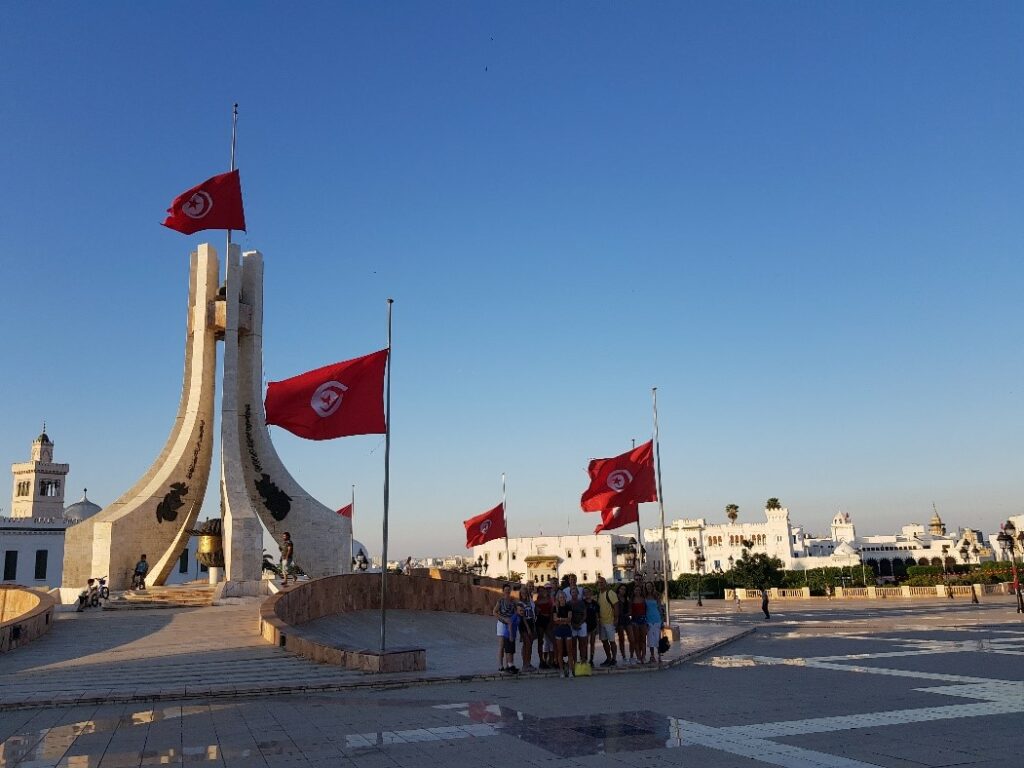
The Kasbah Square
Sandwiched between Avenue Bourguiba and the Kasbah Square, the Medina of Tunis is a living testament to the history of North Africa, from Roman times, to the Arab conquest, the medieval Arab Moslem world, the colonial era, the post-colonial independence and Tunisia’s emergence as a modern democracy. The medina is not just a testament to the past, but also a testament to the future of a vibrant, enterprising and diverse society, not without its challenges, but well equipped with the skills toaddress and overcome them.
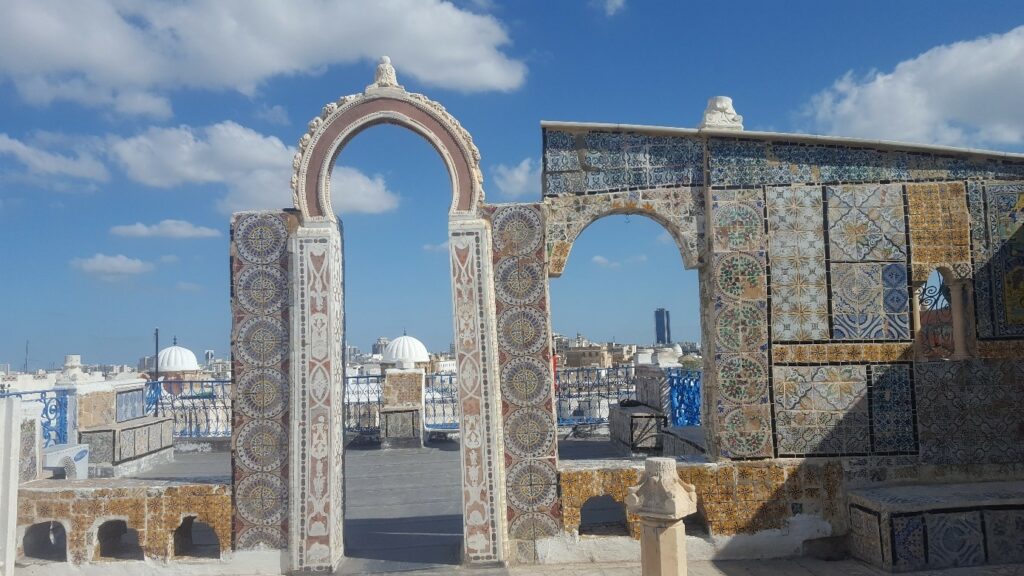
Text and photos by Sami Harize; cultural Touristic Guide, Independent Heritage researcher, explorer and photographer.
Tunis, first of January 2020.
Bibliography
- Masmoudi (M.), Béji (H.) , Dimassi (B.), Houidi (F.), et Binous (J.), Tunis. La ville et les monuments, Cérès productions, Les guides Cérès, Imprimé sur les Presses des Imprimeries Réunies, Tunis, 1980.
- Dunant (Henri), La Régence de Tunis, Société Tunisienne de Diffusion, Tunis, 1975.
- Sebag (Paul), Tunis. Histoire d’une ville, L’Harmattan, Paris, 1998.
- Saadaoui (Ahmed), Tunis ville ottomane. Trois siècles d’urbanisme et d’architecture, Centre de Publication Universitaire, Tunis, 2010.
- Sebag (Paul), Tunis au XIIe siècle. Une cité barbaresque au temps de la course, L’Harmattan, Paris, 2010.
- Irwin (Robert), Ibn Khaldun. An Intellectual Biography, Princeton University Press, New Jersay, 2018.
- Mouhli (Zoubeir) et McGuiness (Justin), Tunis 1800-1950. An architectural and urban portrait, Association de Sauvegarde de la Médina, Elyzad, Tunis, 2006.
- Daoulatli (Abdelaziz), Tunis. Capitale des Hafsides, Alif, Les éditions la Méditerranée, Tunis, 2009.
- Santelli (Serge), Tunis. Le creuset Méditerranéen, Les éditions du Demi-cercle / CNRS éditions, PIR-Villes et Saint Germain du Puy, 1995.
- Messikh (Mohamed Sadek), Tunis La mémoire, Alif, les éditions de la Méditerranée, Ben Arous, 2000.
- Bilas (Charles), Tunis. L’orient de la modernité, éditions de l’éclat, publié avec le concours du Centre National du Livre et du Ministère de la culture et de la communication, (Direction de l’architecture et du patrimoine), Paris, 2010.
- Pellegrin (Arthur), Le vieux Tunis. Les noms de rues de la ville arabe, Bulletin économique et social de la Tunisie, num.64, 1952, Tunis.
- Ben Becher (Fatma), Tunis. Histoire d’une avenue, éditions Nirvana, Tunis, 2003.
- Ben Becher (Fatma), Le Théâtre Municipal de Tunis, éditions Finzi Créations, Tunis, 1998.
- Maherzi (Hédi), Sidi Mahrez. Soltane El Médina, Déméter éditions, Tunis, 2006.
